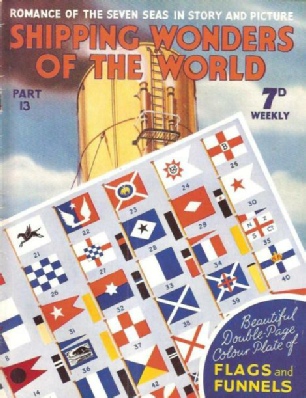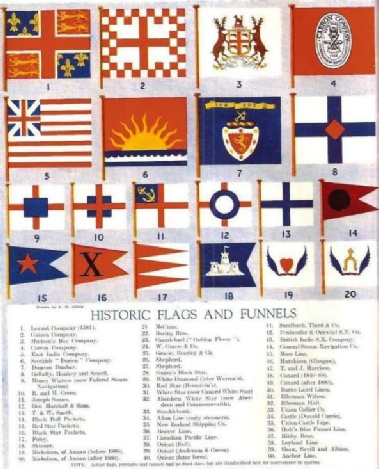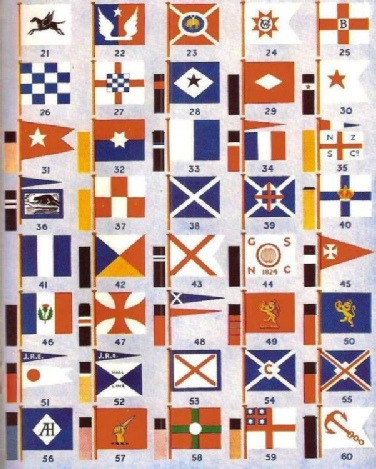
© Shipping Wonders of the World 2012-



Part 13
Part 13 of Shipping Wonders of the World was published on Tuesday 5th May 1936.
This issue included a double-page centre-spread colour plate illustrating “Historic Flags and Funnels”, part of which is shown on the cover design. The plate accompanied the article on House Flags and Funnels
The Cover
The cover shows a ship’s funnel partly overlaid by the second page of the colour plate included with this issue.

Contents of Part 13
Seven Years Under the Sea
Concluded from part 12.
Adventures of the Dream Ship
Ralph Stock, a famous author, his sister and a friend sailed a 47 ft yacht from a port in Devon to an island in the Pacific and thus accomplished an outstanding feat of navigation.
The article is the third in the series Great Voyages in Little Ships.
Passenger and Cargo Liner
The opening of the Panama Canal introduced many new trade routes, in particular that for the carriage of merchandise between the Pacific Coast of North America and the United Kingdom and the Continent. This route has grown in the last few years, and special vessels have been built to carry the grain and lumber of the northern ports and the fresh fruit of California. The Canada, one of the latest of these dual-cargo ships, is one of the most powerful single-screw ships afloat.
This is the eighth article in the series on Merchant Ship Types.
Rotor Ships
Why the application of the rotor to ship propulsion, after having proved satisfactory, did not remain long upon the high seas.
House Flags and Funnels
The fascinating story of historic house flags and funnels. This article describes the many-coloured devices and coats of arms which merchant vessels have borne throughout the history of maritime trade. This chapter deals not only with the flags of modern steamship companies, but also with those of the pioneers of merchant shipping. Much of the material of this chapter has not been published previously.
Historic Flags and Funnels (double-page colour plate)
Historic Flags and Funnels
The double-page centre-spread colour plate which appeared with this article. It comprises a total of 60 individual flags and funnels with a numbered key. The flags range from (1) the Levant Company of 1581 (left-hand page, upper left ) to (20) Nicholson of Annan after 1860 (left-hand page, lower right ); and from (21) the McCunn Company (right-hand page, top left ) to (60) the Anchor Line (right-hand page, lower right ).
Contents of Part 13 (continued)
In the Sailing Ship’s Forecastle
The “shell-back” - or forecastle-hand of sailing ship days - was a product of the conditions in which he worked and lived. He was hardy and courageous by nature, and the circumstances of his life made him accept extreme discomfort with comparative indifference.
With the Fleet at Sea
An account of a trip in the English Channel and North Sea in a battleship engaged on peace-time manoeuvres.
The article is the fourth in the series on The Navy Goes to Work.
South with Shackleton
Though a spectacular attempt to cross the Antarctic Continent on foot did not succeed, Shackleton’s 1914-1916 expedition was a triumph of bravery and endurance.
The article is the fourth in the series Epics of Exploration. This chapter is concluded in part 14.
There is another article on Shackleton’s earlier Antarctic Expedition in the chapter “To the Uncharted South”.

